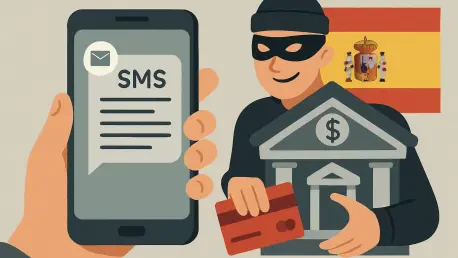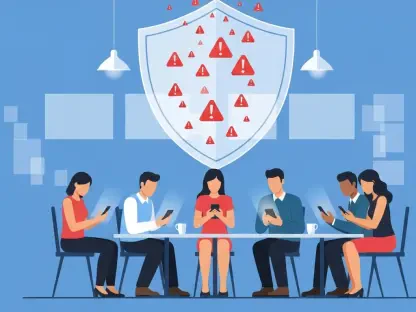In an alarming development sweeping across Spain, a surge of deceptive SMS messages targeting bank customers has prompted urgent warnings from both police cyber units and financial institutions. These fraudulent texts, often referred to as “smishing” by scammers, are designed to trick unsuspecting individuals into revealing sensitive banking information. With a polished appearance and urgent tone, the messages mimic legitimate bank alerts, claiming unauthorized transactions or pending payments that require immediate action. Victims who fall for the ruse risk losing significant sums of money within minutes as criminals gain access to their accounts. This growing threat has sparked a coordinated effort to educate the public on how to recognize and respond to these scams. As mobile banking becomes increasingly prevalent, understanding the tactics used by fraudsters is essential for protecting personal finances from such sophisticated schemes.
1. Understanding the Smishing Threat
The latest wave of SMS bank scams in Spain operates with chilling precision, exploiting the trust people place in text messages that appear to come from their banks. These messages often display the bank’s name in the sender field, a result of spoofing techniques that make them blend seamlessly with genuine notifications. The content typically warns of a suspicious transaction, such as a transfer of several hundred euros, and urges the recipient to click a link to confirm or cancel the action. The urgency embedded in the message plays on human instincts to act quickly to prevent loss. However, this is merely a facade to lure individuals into a trap. Once the link is clicked, it directs to a counterfeit website that mimics the bank’s official login page, capturing every detail entered. This method has proven devastatingly effective, with many realizing the deception only after their accounts have been drained by cybercriminals.
Beyond the initial text, the scam often escalates with follow-up tactics to deepen the fraud. In some instances, victims receive a phone call shortly after entering their details on the fake site, with the caller posing as a bank security representative. This impostor may request additional verification, such as a one-time passcode, under the pretense of securing the account or reversing a transaction. The seamless integration of SMS and phone contact creates a false sense of legitimacy, exploiting panic and confusion. Reports indicate that thousands of euros have been stolen in mere minutes through this multi-step approach. Banks in Spain have reiterated that they never request sensitive information like full passwords or PINs via text or phone, a key distinction that can help individuals identify fraudulent communications before it’s too late. Awareness of these red flags is critical to avoiding the devastating financial impact of smishing.
2. Real-Life Impact of SMS Scams
The human cost of these SMS scams is evident in the stories of those who have fallen victim to the fraud. Consider the case of a retired teacher in Spain who received a text alerting him to a supposed transfer of €300 from his account. The message, appearing to originate from his bank, prompted an immediate reaction to click the provided link to cancel the transaction. Within moments of entering his login credentials on what seemed to be the bank’s website, €2,000 was siphoned from his account. It was only after the funds disappeared that he realized the site was a meticulously crafted duplicate. His bank later confirmed the deception, but recovering the lost money remains a challenge. Such incidents highlight how even cautious individuals can be caught off guard by the sophisticated design and urgent tone of these messages, underscoring the need for vigilance in digital interactions.
The ripple effects of these scams extend beyond immediate financial loss, often leaving victims grappling with emotional distress and a sense of violation. The process of reporting the incident, freezing accounts, and attempting to reclaim stolen funds can be both time-consuming and frustrating. Many affected individuals also face the daunting task of rebuilding trust in digital banking platforms, which are otherwise convenient and secure when used correctly. Banks and law enforcement agencies emphasize that sharing personal experiences, though difficult, can serve as a powerful deterrent for others. When people hear firsthand accounts of how these scams unfold, they are more likely to pause and question suspicious messages. Public education campaigns are increasingly focusing on these narratives to illustrate the real-world consequences and drive home the importance of skepticism toward unsolicited communications.
3. How to Protect Against Fraudulent Texts
Recognizing the hallmarks of a smishing attempt is the first line of defense against falling prey to these scams. Legitimate banks in Spain do not use SMS links to resolve account issues or request sensitive information such as passwords or one-time codes. Messages that impose artificial deadlines, like “act within 30 minutes,” or use vague greetings instead of personalized details are immediate red flags. Additionally, the phone number or URL in the message may not match the official contact information printed on a bank card or website. Developing a habit of never clicking on links in financial messages can prevent accidental exposure to fraudulent sites. Instead, individuals should access their bank’s app or official website directly by typing the URL manually or using a saved bookmark. This simple routine can significantly reduce the risk of becoming a victim of these deceptive tactics.
If a suspicious text is received, taking swift and deliberate action can minimize potential damage. The initial step is to avoid engaging with the message—do not click links, reply, or call any provided numbers. Taking a screenshot of the text for documentation before deleting and blocking the sender is advisable. Reporting the incident to the bank and local authorities, such as the Policía Nacional or Guardia Civil, helps track and combat these scams on a broader scale. Mobile operators can also assist by flagging similar messages to protect other users. For added security, enabling two-factor authentication on banking and email accounts creates an additional barrier for fraudsters. Establishing a personal banking routine, such as saving the bank’s official contact number and relying on app notifications rather than SMS alerts, further fortifies defenses against smishing attempts. These proactive measures are essential in today’s digital landscape.
4. Steps to Take After Clicking a Fraudulent Link
In the unfortunate event that a fraudulent link has been clicked and personal information entered, immediate action is crucial to limit the damage. Contacting the bank using a separate device with the official number from the card or website should be the first priority. Explaining the situation in detail allows the bank to freeze accounts, block online access, and halt any pending transactions. Simultaneously, securing the compromised device by updating its operating system, removing unfamiliar profiles, and running a reputable security scan can prevent further unauthorized access. Changing passwords for banking and email accounts, ideally through a secure password manager, is also recommended. These steps, taken promptly, can mitigate the financial and personal impact of the breach, though they require a calm and focused approach despite the stress of the situation.
Following the initial response, formalizing the incident through a police report, known as a denuncia, is a necessary step for documentation and potential recovery. Retaining the reference number from this report is important, as banks often require it during their investigations. Sharing the experience with family, friends, or colleagues can serve as a cautionary tale, reducing the likelihood of others falling for similar scams. Reflecting on the incident, many victims have noted how embarrassment initially prevented them from speaking out, yet doing so ultimately helped raise awareness. Banks and authorities have worked tirelessly in recent times to support those affected, offering resources and guidance to navigate the aftermath. Their efforts, combined with individual vigilance, play a vital role in curbing the spread of such fraud. Moving forward, adopting stricter personal security habits and staying informed about evolving scam tactics remain key to preventing future losses.









